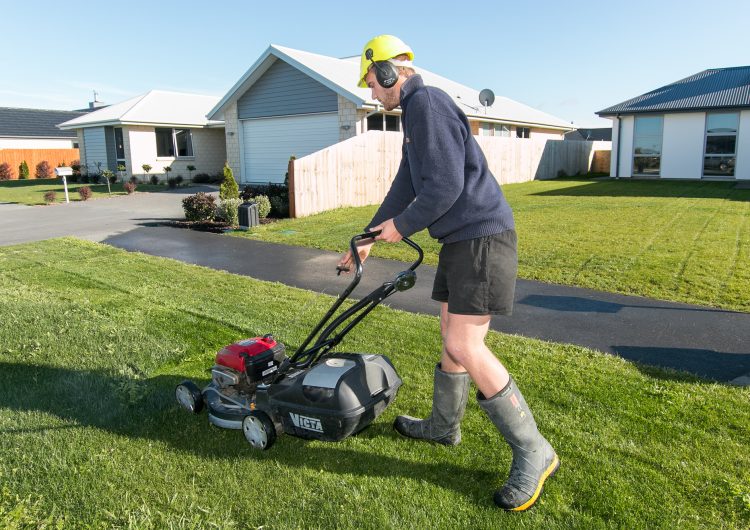Your lawn is an important feature of your property. When it’s in good shape it really makes your outdoor spaces inviting and enjoyable to be in. However, if lawns get out of control they become unsightly and hard to manage. Here are some tips to help you keep your turf looking awesome!
Mowing
Regular mowing encourages the growth of a healthy lawn. It can be tempting to set the blade of your mower to a low setting and cut your lawn short, hoping it will save you time because you won’t need to cut it as often. Don’t do it! This is called “scalping” and actually damages the grass. It also makes it easier for weeds to invade your turf. On the other hand, if you let the grass get too long from infrequent mowing, it can allow coarser, less desirable grasses to become established and over-take your lawn.
What length should you cut your grass?
2.5 to 3cm is generally agreed to be a healthy length for your grass.
How often should you cut your grass?
That depends on the season. The speed at which the grass is growing will determine how often it needs to be cut – less often in summer and more in spring. As a guide you should aim to cut no more than a third of the height of grass at any one time – so when it reaches about 4 to 5cm high.
Are there times when I shouldn’t mow my lawn?
Don’t mow grass when it is wet, such as after rain or in the morning when it is covered in dew. It can introduce diseases to your lawn. However, mowing the lawn during the hottest part of a summer’s day can also stress the grass. Avoid mowing if your lawn is very dry and brown.
What should I do with my grass clippings?
If you are cutting your grass regularly, the clippings will not be too long and you can leave them on the lawn – no catcher required. This returns the nutrients to the ground so you won’t need to use as much fertiliser. The clippings also help retain moisture in the root system, making your watering efforts more effective.
If the grass is longer and clumps up, a catcher should be used or the clippings will smother the lawn. The collected clippings can be used for compost, mulching your garden or if you’re a bit more adventurous, turned into grass clipping tea – a liquid fertiliser for your garden. Otherwise you’ll need to dispose of them in your Council provided green bin. Do not burn your clippings!
Watering
Grass needs water, but just as you can let your lawn get too dry, you can also over-water it and damage the roots.
How often should I water my lawn?
Watering just twice a week for a longer period is generally more beneficial to grass than short daily bursts of water. This is because watering for longer allows the moisture to soak further into the ground where it can reach the roots which need the water – it’s not the blades of grass that soak up the water!
When should I water?
The best time is early in the morning. Don’t water in the heat of the day as most of the water will be wasted to evaporation. Avoid watering in the late evening as it leaves the lawn damp for longer and more prone to disease and fungus.
What do I do when the ground is very hard and dry?
In particularly dry conditions you can help water penetrate the root system of your lawn by using a garden fork to pierce the hard earth, creating small holes. Do not wiggle the fork too much! You just want small holes that will not be visible after watering.
Tips for automated lawn irrigation
Program your automated system to a run at a time when you can still monitor it (so not in the dead of night!). You want to be able to see which area is being watered and if there are any spots that are receiving too much or too little water – make sure you aren’t watering your driveway. You also want to make sure your automation isn’t going to program the waste of water by sprinkling when water isn’t required such as when it’s already raining.
Water is a precious resources and The Christchurch City Council has a handy list of water saving tips here.
Note: Be sure to abide by any water restrictions that apply in your area.
Dealing with brown patches in your lawn
In summertime, brown areas on your lawn don’t automatically mean the grass is dead beneath the surface. This is especially true if an area has been covered by a tent, children’s toys or outdoor furniture – the roots may still be fine and able to recover at the end of the season.
Mowing the grass too short can cause brown patches too – let it grow out again and don’t cut it so close in future.
However, brown patches of dead grass appearing in February or March may be a sign of grass grub which will require an insecticide treatment in the spring.
Backyard Projects can help you maintain an awesome, lush green lawn. Talk to us about an irrigation system tailored to your lawn and garden as well as managing pests and weeds.

